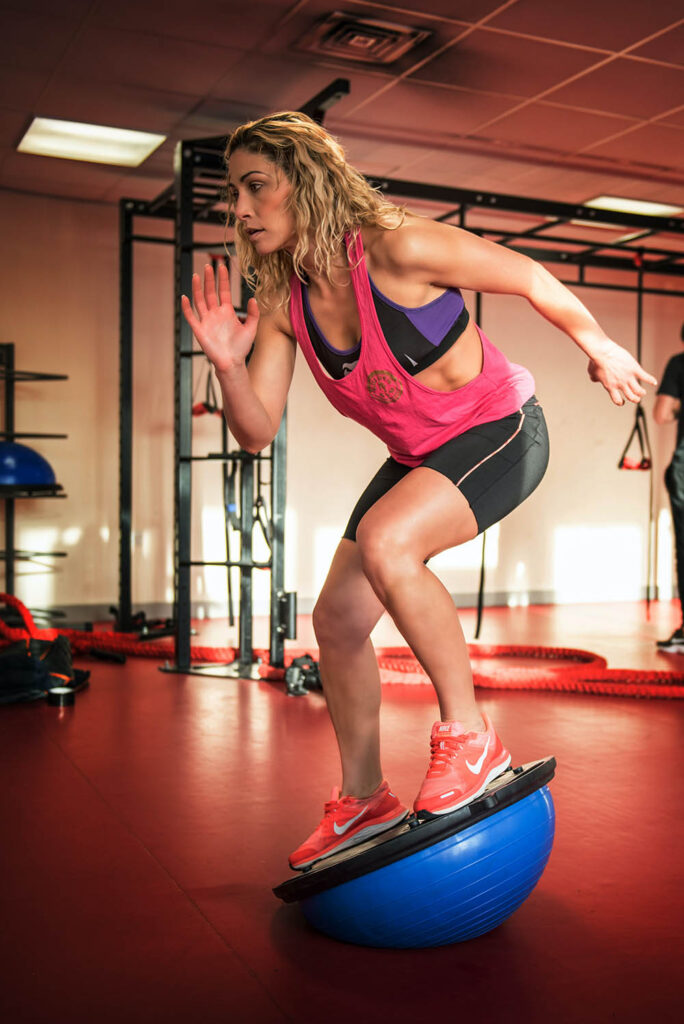A plyometric exercise is a specialised movement used to create and improve power.
Power is when the elements of strength and speed are combined to perform a quick and forceful movement.
These movements use the elasticity of muscles to increase the force of the muscles contraction.
Plyometric movements are common to a number of sports and help athletes improve their performance, whether it be to jump higher, run faster or tackle harder.
Therefore, plyometric training can be performed by individuals from your average weekend warrior to a high performance athlete. They are also specific for daily functional activities and are considered a high intensity form of exercise.
Plyometric exercise should be blended in with a strength and conditioning program as well as endurance work to develop a well rounded exercise program.
They can also be added by the Physio at the end stages of rehabilitation to assist in the return to sport following an injury.
Plyometric exercises comprise of two main components.
It starts with a muscle lengthening component (eccentric muscle contraction) where a high load is on the muscle, and is followed immediately by a muscle-shortening contraction (concentric muscle contraction).
When performing a squat, bending your knees from the start position to the squat position is considered the lengthening phase. When you jump back up you undergo the stretch-shortening phase and this produces the explosive movement of contracting the muscles.
Before commencing plyo exercises it is important to have a baseline level of strength.
Plyometric exercises are high intensity and loaded exercises that require this minimum level of strength.
In addition, it is important to have at least 48 hours rest between each session when these exercises are undertaken as individuals often pull up sore and need this recovery time.
Below is an example of some plyometric exercises in three different stages that can be performed as seen in the links attached with each exercise. Videos provided by 5.2 Ninja.
Plyometric Prep
Preparation for plyometric exercises is essential to begin with to ensure adequate landing and squat technique is present. Without this basis, injury can occur. These exercises are to be performed:
- 3 X 10 reps
- 3-4 times per week
- 2 minutes rest between sets
- Double leg landing exercise
- Importance of standing up tall up on toes and making sure body is aligned with limited side or forwards lean, using a mirror if required.
- Pull actively down into a strong squat position.
- Focus on ankle movement, knee position over midfoot (not collapsing in), and activation through glutes so a strong base position is held.
- Single leg landing exercise
- As above into single leg squat position.
- Stability with glute activation is even more crucial as balance is challenged.
- Maintain knee position over midfoot, and not bending inwards.
- Backside backwards, not leaning forwards over knees
Plyometric basics
These exercises are to be performed:
- 3 X 6 reps
- 2-3 days per week
- 2 minutes rest between sets
It is important to commence box jump and box drop on/off a 15cm box initially to ensure correct motor patterning and technique. Do not progress these exercises too quickly as your body will need time to adapt. Technique is king!
- Squat jump
- Single leg hop
- Box jump 15cm
- Box jump 30cm
- Box jump 60cm
- Box drop 15cm
- Box drop 30cm
- Box drop 60cm
- Box drop single leg 15cm
- Box drop single leg 30cm
- Box drop single leg 60cm
Plyometrics advanced
Advanced Plyometrics should only be considered when the basics have been mastered otherwise injury or discomfort can occur. With the advanced plyometric exercises focus now changes to concentrating on a low contact time on the ground with quick and powerful release back up.
These exercises are to be performed:
- 3 X 6 reps
- 2-3 times per week
- 2 minutes rest between sets
- Triple hop
- 3 contiguous hops forward
- Continuous lunge jumps
- Continuous lunges with landing and spring back up as quick as possible reinforcing low contact time.
- Box drop and jump 15cm
- Box drop and jump 30cm
- Box drop and jump 60cm
- Box drop and jump single leg 15cm
- Box drop and jump single leg 30cm
- Box drop and jump single leg 60cm
Undertaking these exercises correctly can be a difficult process and should be done with the guidance of trained professionals such as a Physiotherapist, Sports Chiropractor or a Personal Trainer. Glenferrie Sports and Spinal Clinic located in Hawthorn can assist in ensuring that you transition into a plyometric program safely and effectively. Contact us at 9815 2555 or www.glenferriessc.com.au.
By Sarah Forsyth. Physiotherapist at Glenferrie Sports and Spinal Clinic, Hawthorn.
